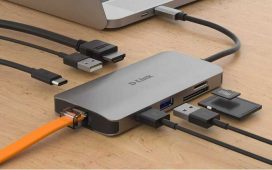The Sega Mega Drive – or Genesis, as it was known in North America – is quite rightly revered as one of the greatest consoles of all time, with a spectacular library of brilliant titles that still hold up today. And as a celebration of the machine and its games, Sega’s new Mega Drive Mini pulls out all of the stops: the miniaturised rendition of the hardware outstrips similar efforts from Nintendo and Sony, the library of games is larger and brilliantly selected, while the emulation itself is delivered by none other than M2 – acknowledged masters of bringing the games of yesteryear to the hardware of today.
Sega’s 16-bit masterpiece first arrived in the late 80s and while it got off to a slow start, it would eventually go on to challenge market leader Nintendo, with the Super NES vs Mega Drive seeing the first skirmishes in the now never-ending console war. This was a time when bringing the arcade experience to the home was still something companies were fighting for. The Mega Drive delivered highly impressive results here across its lifespan, but similar to Nintendo, it was actually the first-party games like Sonic the Hedgehog and Streets of Rage among many others that elevated Sega to the next level.
After falling in love with the system, I’ve never stopped playing it or collecting for it and yet, for many people, it’s been decades since they last held the iconic game pad. This is why form factor is crucial for a mini console – you want to channel that nostalgia with hardware that looks and crucially feels just right. In this regard, Sega has taken the mini console to a whole new level of authenticity to the point where every button and panel on the system works in some fashion – it truly looks and feels like a tiny version of the original console.
The power switch, the reset button and the volume slider are all moveable parts (even if the volume slider doesn’t actually do anything!) and authenticity has been ramped up to the point where even the expansion port cover is removable. Taking detail to the next level, even the main cartridge slot has working flaps that allow for miniaturised facsimile carts (not included) to be inserted. Controllers are USB-based, of course, but the ports on the console still resemble real hardware as opposed to the flap design seen on the Super NES Classic. It even has the appropriate holes for attaching the Sega CD/ Mega CD – a non-working version of which is available in certain markets. A lot of these details are window-dressing perhaps, but I see it more as Sega’s commitment to getting the product just right in terms of its physical form-factor. The firm seems to want everything to be as authentic as possible.
A detailed video review of the Sega Mega Drive Mini – John Linneman grew up in North America and gamed on the ‘Genesis’ instead, if you’re wondering about the product photography!
The two bundled controllers themselves are solid as well, perfectly replicating the look of the original three-button pads – though I feel the d-pad is a tad stiff and the plastics feel noticeably different from original hardware. Some potential buyers are disappointed that Sega didn’t include the six-button pad with the Western release of the Mini but I feel that nostalgia plays a huge role in the design and most players back in the day probably only ever owned the original three-button pad. The six-button pad is included in the Japanese release and obviously, included titles like Street Fighter 2 will benefit – so to get the most out of those games, users will need to investigate other options.
Within the casing, the Mini is powered by the mysterious Allwinner based ZUIKI Z 7213 system on chip – a processor on which little information is publicly available. It’s likely comparable to Nintendo’s recent retro mini offerings, but it’s not clear how far its capabilities extend. Alongside the processor, the board features 512MB of flash memory that stores the included games. In terms of I/O, in addition to the controller ports, there’s also HDMI video out – which delivers 720p 60Hz output – and a micro-USB port for power.
Once you hook up the Mini to your display, you’re presented with a simple, clean menu system. Games are presented in a large grid format and by changing your language in the options menu, the covers change between different regions. There’s also a nice spine view available which also highlights one of my favourite details – when looking at the Japanese Mega Drive selection, Super Fantasy Zone is presented as a smaller case – just like the real thing – while Road Rash receives a slightly thicker box design, just like all of the original EA releases of the period. It’s this level of attention to detail that separates M2 from the rest.
Speaking of attention to detail, when you change the language it’s not just the box art that changes – you also get different region variants of each game. In this case, the inclusion of multi-region ROMs is important because with many titles, there are notable differences between different regions. The Japanese version of Dynamite Headdy, for instance, features additional story elements, different artwork and is less punishing overall. Contra: The Hard Corps is easier in its Japanese form as well, and of course, if you select the European version, you get the sanitised Probotector variant. You don’t need to import the different Minis to get all of the different versions of the games though – they’re all there already.
Most importantly for European users, if you choose to play using the PAL region, the games run at 60Hz rather than 50Hz, so you don’t need to deal with slower gameplay or judder as a result of the 50Hz output being resampled to 60Hz as we saw on PlayStation Classic. And of course, original PAL letterboxing is completely eliminated.
As you may expect, the settings menu offers up a range of different video options. Three are available in total: a pillar boxed mode, a stretched 16:9 mode and a CRT filter for both. The Mega Drive can output different resolutions but the most common two are 320×224 and 256×224 – the latter of which is the same as Super NES and other systems of this era. Most games are 320 pixels wide and here, the Mini performs a 3×3 scale without linear filtering – so pixels are razor sharp and scrolling is free of shimmering.
When using the wide mode, a 5x scale is used on the horizontal axis filling the screen but the vertical is slightly stretched now, resulting in uneven pixel scaling – for every four Mega Drive pixels using a 3x scale, the fifth pixel instead uses four pixels. This results in visible lines across the image while scrolling vertically, delivering some strange artefacts that don’t look quite right. For 256-pixel wide games, however, the results are different – when in wide mode, a perfect 6x scale is used on the horizontal while the vertical resolution exhibits the same issue noted earlier.
The pillar boxed mode, however, has issues on these games with scaling alternating between 4 and 5x every few pixels resulting in very obvious shimmering during scrolling. So why would you even want to use the wide mode to begin with? I can think of two reasons: you could use your TV’s built-in controls to adjust to a proper 4:3 aspect ratio if you’re on a flat panel. Or, in a weird edge case, you could hook up the Mini to a proper CRT computer monitor for silky smooth scrolling action. To achieve 4:3, however, you’ll need to use the wide mode combined with monitor adjustments to stretch the image to fill the screen. Due to how CRTs work, however, you won’t introduce any scaling artifacts since the image is, in fact, not scaled. It looks great, though!
The Mini itself attempts to replicate a CRT experience with a bespoke filter, but to be honest, it’s a disappointing effort. This is the most disappointing feature of M2’s emulation as it simply blurs and filters the image while applying weak scanlines. It’s not a great implementation and I wouldn’t suggest using it. Overall, scaling isn’t quite perfect in every mode but if you want to minimise scaling issues, most games play best using the default pillar boxed mode. For 256-pixel wide games, however, such as Wonder Boy in Monster World and Monster World 4, you’ll want to use the wide mode coupled with manual TV adjustment for the best results.
With M2 in control of this project, I expected great things from the emulation and the end results are mostly excellent. Aside from the scaling oddities, there isn’t much else to worry about: each of the games included features accurate visual emulation, so all the tricks used in games like Gunstar Heroes or Contra: The Hard Corps work as you would expect.
Original hardware oddities are removed though, like the background colour onto which the visuals were overlaid, and the CRAM dots that manifested occasionally in the corner. It’s technically less accurate, but produces more pleasing results on a flat panel display. The two-player split-screen mode in Sonic 2 also works correctly while displaying as it would in most PC emulators – that is, at full 60 frames per second without interlacing. This is technically less correct again, but it’s the right choice for today’s progress scan display.
Overall though, it’s a solid representation of the experience from a visual perspective but where we start run into issues is with the audio. Emulating Mega Drive audio has long proven challenging and this difficulty is increased by variation between different models of the original hardware delivering changes in audio reproduction. There are some inaccuracies here, particularly on known troublesome games like Comix Zone, while other titles like Streets of Rage 2 sound fine. However, a bigger issue is audio delay – the time between when a sound should play and when it does play. There’s a definite lag here compared to original hardware in the order of 10 to 11 frames. That’s over 160ms and it’s not good.
Being an emulation-based system presumably using a framebuffer, the Mega Drive Mini also possesses issues found in other retro boxes too – additional input lag. From what I can tell, input lag is increased over original hardware by several frames so every single title feels a little heavier than you might like. Even when I played the Mega Drive Mini on a zero-lag CRT, the input lag provided by the emulation is noticeable and obviously that compounds with flat panel display latency too.
That said, I mostly play these games on original hardware using a CRT so the difference is significant but compared to most other modern solutions, it’s still reasonable. For instance, it’s much faster than the recent Genesis/Mega Drive Collection released for current generation consoles. Still, for my money, this is what impacts the product the most – input just isn’t as crisp or as responsive compared to the real thing. You get used to it after a while but it never feels quite as it should but then again, if you were OK with the NES or Super NES Classic, the results here are comparable – so it’s not a deal breaker but more something to be aware of.
Where the Mega Drive Mini truly excels is in its game collection. Sega’s 16-bit super console features one of the most varied and enjoyable game libraries out there and it’s clear that Sega poured a lot of love and effort into licensing an amazing line-up of titles. Not everything you might want is going to be in here, but it’s hard to argue with the brilliant titles that are included.
Many of Sega’s best first-party titles are present and accounted for – the first two Sonic games had to be there but stuff like Shinobi 3, one of the finest action games ever made, really adds to the package. Monster World 4 is also in the package – a game I finally finished on original hardware earlier this year. This version features the English translation created for the digital download version years ago too – which is a lovely addition. Of course Streets of Rage 2 is in the line-up, which remains a classic, as is Gunstar Heroes from Treasure.
The Mega Drive Mini is a great product overall but for the retro purist, there are better options: original hardware or this, the stunning Analogue Mega Sg.
More importantly, Treasure’s best Mega Drive project, Dynamite Headdy, is included – an absolute gem of a game. Then there’s the Konami stuff like Contra and Castlevania which are both pricey in their original form and stand as two of the best action games on the system. Alisia Dragoon is another great choice – a unique action platformer from Game Arts, the studio behind Lunar and Grandia. I was also thrilled to see the inclusion of Shiny Entertainment’s Earthworm Jim – I’m a huge fan of this one and the Mega Drive version is excellent.
I was also intrigued by the inclusion of three somewhat uncommon games: Mega Man – The Wily Wars, Tetris and Darius. The first title on the list is an interesting conversion of the first three Mega Man titles, ported by Minakuchi Engineering – the development house behind the Game Boy Mega Man games, which I adore, and much of Mega Man X3. While it has its flaws and I’m not a huge fan of the music, it’s a neat release as the first three games enjoy a full 16-bit makeover. This was originally released in Japan and Europe on cartridge but the US only received it via the Sega Channel – a cable-based system that allowed you to download games to a bespoke cart.
Then there’s Tetris – a conversion of Sega Tetris from the arcade made for the Japanese Mega Drive. Only a small handful of copies exist, making this the most expensive Mega Drive game in existence. It’s neat to see it preserved on the Mega Drive Mini and the fact that it’s there at all points to a supreme level of fan service from Sega and M2. Lastly, there’s Darius – there has been a lot of speculation and conjecture over who developed this conversion – but either way, this is a full conversion of the original Darius, which we’ve never seen before on the Mega Drive. The sequel received an original release on the system – but not Darius 1 – though the game was ported over to the PC Engine. Either way, it’s pretty neat having a brand new port available for the Mini’s release.
In summary, there’s so much to love about this product, from the brilliant recreation of the machine itself to the excellent emulation and a simply stellar line-up of games. Audio delay, input lag and scaling oddities hold this back from absolute perfection – but for the purists, there’s always the Analogue Mega Sg for absolute authenticity. However, for a product aimed at recapturing the magic of a very special era in console gaming, it’s simply superb. If you grew up with Sega’s 16-bit machine but haven’t played it in a while, this is an unmissable release – and possibly the best mini retro console yet.














